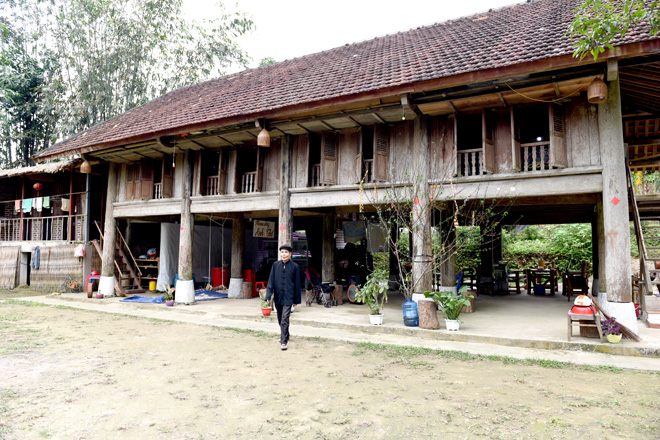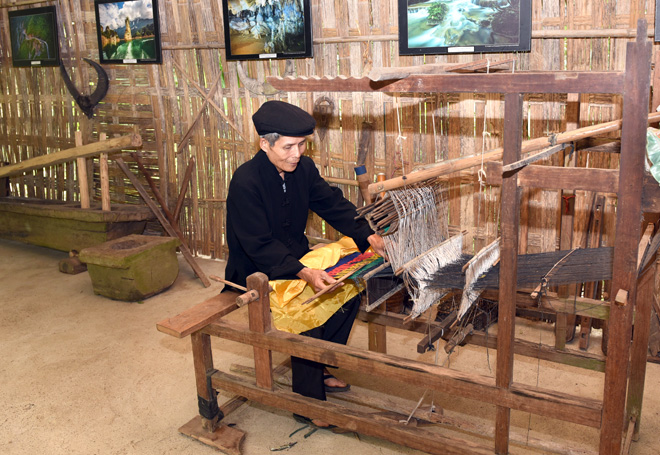 A corner of Anh The homestay facility in Nam Dip hamlet, Lang Can commune, Lam Binh district |
Although it has been set up and developed in Lam Binh district for the past several years, homestay tourism has proven to provide visitors with many interesting experiences. Up to 15 households in the district operate homestay tourism, providing accommodation for 500 guests with qualified standard facilities. The homestay’s owners have also received training in the proper skills to serve visitors.
Luu Thi Thoan, a vacationer from Nam Tu Liem district in Hanoi, said that her family visits Lam Binh almost every year and often picks a homestay for their vacation. She has seen many changes in the land every time she returns. She and her family members are provided with a lot of experiences while living with and sleeping at the residence of locales, which helps them to learn about the local culture and participate in community activities.
During his first trip to Vietnam, Xavi, a tourist from Spain, decided to pick Lam Binh as one of his “must-go” places in the country, together with Ha Long Bay in Quang Ninh province, Sapa town in Lao Cai province, Da Nang city, and Nha Trang city. During his planning for his two-month Vietnam visit, he spent a lot of time seeking information and became interested in Lam Binh district.
He excitedly shared that he has travelled to many places around the world, during which he often stays in homestays. He found it interesting to explore the indigenous culture of the Tay ethnic people in Lam Binh, practice the craft of weaving and taste traditional dishes.
 Chau Minh Vy, a homestay’s owner in Nam Dip hamlet, Lang Can commune, Lam Binh district, examines production tools of Tay ethnic people, which are on display for visitors |
Chau Minh Vy, owner of Anh The homestay in Nam Dip hamlet, Lang Can commune, said that his homestay has been operated for three years and have welcomed many visitors, including foreigners. At his homestay, holiday-makers can rest in pure atmosphere, savour signature dishes, and join production activities with local people.
Therefore, while setting up the homestay, his family tended to utilise natural materials, such as wood, bamboo, and rattan. Tourists have shown great interest in experiencing the rural life and impressions on art exchange activities and campfires of local Tay people.
According to Nguyen Van Hien, Vice Chairman of Lam Binh district People’s Committee, the district’s authorities have given attention to enhancing infrastructure at tourist sites which have rich potential for tourism development, while giving priorities to cultural, eco and community-based tourism.
Proper investment has been made to build cultural villages, which can facilitate community-based tourism, such as the villages for culture and tourism in Na Tong and Na Dong hamlets (Thuong Lam commune), Na Muong hamlet (Khuon Ha commune), and Nam Dip hamlet (Lang Can commune).
Most recently, the Na Hang – Lam Binh Natural Reserve was recognised as a special national tourist site. Soon after receiving the accolade, the district’s authorities directed the functional agencies to draft a project on improving the investment and business environment, calling for investment from organisations, individuals, and businesses to improve infrastructure, facilities, and construct new resorts and eco-lodges, contributing to fostering the economic situation, increasing livelihoods and generating incomes for local people.

Comment
Print